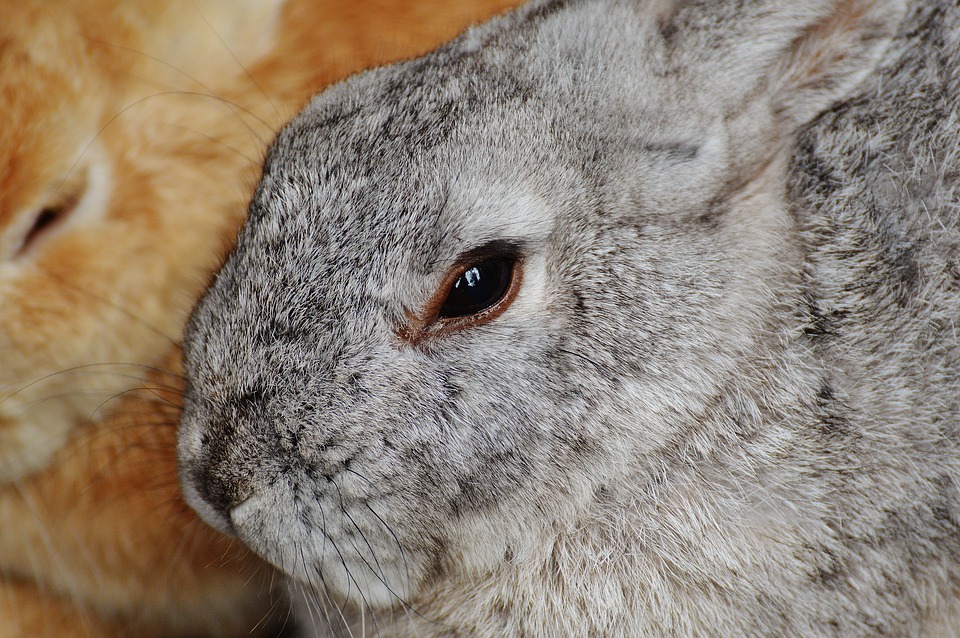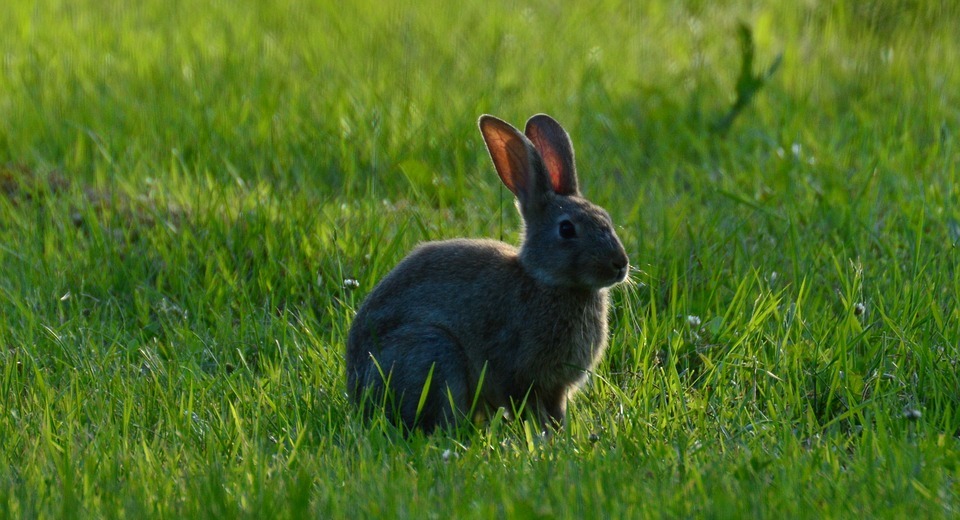This article delves into the fascinating world of wild rabbits, exploring their lifespans, the challenges they face, and how they navigate the complexities of their natural environment. We'll investigate the typical lifespan, the numerous threats they encounter, and the remarkable adaptations that enable their survival.
Part 1: The Short but Intriguing Lifespan

1.1. A Brief Existence: The Average Lifespan
The average lifespan of a wild rabbit is a mere 1-2 years, a stark contrast to their prolific breeding capabilities. This short lifespan is a harsh reality shaped by the multitude of threats they face in their natural habitat.
1.2. The Exceptions: Reaching the Maximum Lifespan
While the average lifespan is short, some wild rabbits can live up to 5-6 years. These fortunate individuals often reside in areas with fewer predators, abundant food sources, and minimal human impact. This demonstrates the crucial influence of environmental factors on their longevity.
1.3. The Delicate Balance: Factors Affecting Lifespan
The lifespan of a wild rabbit is greatly influenced by a delicate interplay of factors, including:
- Predation: Wild rabbits are prey animals, constantly hunted by a diverse range of predators including foxes, owls, hawks, and even larger domestic cats. This constant threat significantly influences population dynamics.
- Disease: Wild rabbits are vulnerable to a variety of diseases, most notably myxomatosis and rabbit hemorrhagic disease. These often fatal diseases can devastate populations and significantly impact their overall lifespan.
- Starvation: Food scarcity, particularly during harsh winters, can be a major challenge for wild rabbits. This can lead to malnutrition, weakening their immune system and rendering them more susceptible to diseases and predation.
- Weather: Extreme weather conditions such as floods and prolonged droughts can have a severe impact on rabbit survival. These events can disrupt food availability, displace populations, and lead to increased mortality.
- Human Impact: Human activities, including habitat loss, hunting, and road traffic, pose substantial threats to wild rabbit populations. These activities can directly impact their survival and limit their ability to thrive.
Part 2: Understanding the Lifecycle of a Wild Rabbit

2.1. The Beginnings: Birth and Early Life
Wild rabbits give birth to litters of 4-12 kits in burrows, which serve as safe havens, providing shelter and protection from predators. Kits are born blind and hairless, completely reliant on their mother's milk for survival.
2.2. Rapid Growth: Development and Independence
Wild rabbit kits develop rapidly, opening their eyes at around 10 days old. They start weaning at around 3 weeks and become independent at 6-8 weeks, venturing out to find their own food and territory.
2.3. The Circle Continues: Maturity and Reproduction
Wild rabbits reach sexual maturity at around 3-4 months old. Females can produce several litters per year, contributing to the remarkable reproductive capacity that drives population growth.
Part 3: Adapting to Survive: The Remarkable Traits of Wild Rabbits
3.1. The Underground World: Burrowing Behaviour
Wild rabbits are known for their intricate burrow systems, which provide crucial protection from predators, shelter, and a cool refuge from extreme temperatures. These burrows can be complex, interconnecting with multiple entrances and chambers.
3.2. The Night Shift: Nocturnal Habits
Wild rabbits are primarily nocturnal, active at dusk and dawn to avoid predators and make the most of the cooler temperatures. This behaviour allows them to minimise their exposure to predators while maximizing foraging opportunities.
3.3. Blending In: Camouflage and Agility
Their brown fur provides effective camouflage in grasslands and fields, helping them blend seamlessly with their surroundings. Wild rabbits are also known for their remarkable agility and speed, enabling them to escape predators quickly.
Part 4: Threats to the Population: The Challenges Facing Wild Rabbits
4.1. Predators and Diseases: A Constant Struggle
Predation and disease are major threats to wild rabbit populations. Foxes, weasels, and owls are among the predators that prey on rabbits, while diseases such as myxomatosis and rabbit hemorrhagic disease can cause widespread mortality.
4.2. Loss of Home: Habitat Loss and Fragmentation
Human activities, such as land development and intensive agriculture, have resulted in significant habitat loss and fragmentation. This reduces available space and resources, negatively impacting wild rabbit populations.
4.3. Human Impact: The Unintended Consequences
Human interactions, including hunting, trapping, and road traffic, can have a substantial impact on wild rabbit populations. Collisions with vehicles are a common cause of mortality, highlighting the unintended consequences of human activities.
Part 5: The Importance of Wild Rabbits: Their Role in the Ecosystem
5.1. A Vital Food Source: Maintaining Ecological Balance
Wild rabbits play a crucial role in the ecosystem by serving as a food source for various predators, including foxes, owls, and hawks. Their abundance supports the food chain and helps maintain ecological balance.
5.2. Soil Enrichment: Aeration and Nutrient Cycling
Their burrowing activity contributes to healthy ecosystems by aerating the soil and improving drainage. This helps create a more fertile environment for plant growth. They also play a role in nutrient cycling by consuming vegetation and depositing waste, enriching the soil.
Part 6: Conservation Efforts: Protecting the Future of Wild Rabbits
6.1. Protecting Habitat: Restoring and Preserving
Habitat restoration and preservation efforts are crucial for wild rabbit conservation. This includes creating and managing protected areas, reducing habitat fragmentation, and promoting sustainable land management practices.
6.2. Combating Disease: Control Programs and Vaccination
Disease control programs are essential for managing outbreaks of myxomatosis and rabbit hemorrhagic disease. Vaccination initiatives can help protect wild rabbit populations and prevent widespread mortality.
6.3. Responsible Pet Ownership: Reducing Feral Populations
Promoting responsible pet ownership is vital for preventing the release of domestic rabbits, which can become feral and negatively impact wild populations. This includes ensuring rabbits are properly secured and educated on the potential consequences of release.
Part 7: The Impact of Domestic Rabbits: The Blur Between Wild and Domestic
7.1. The Escape and Feralization: A Threat to Native Populations
Domestic rabbits, whether intentionally released or escaping from captivity, can become feral, competing with wild rabbits for resources and spreading diseases. This can have a significant impact on native wild rabbit populations.
7.2. The Hybrid Threat: Interbreeding and Genetic Changes
Feral domestic rabbits can interbreed with wild rabbits, introducing genetic changes that could affect the long-term health and survival of wild populations. This hybridisation can alter the genetic makeup of wild rabbits and compromise their ability to adapt to their environment.
Part 8: Understanding Wild Rabbits: Frequently Asked Questions
8.1. Signs of a Healthy Population: What to Look For
A healthy wild rabbit population displays signs of strong breeding success, with healthy kits and good survival rates. The population should be balanced, with sufficient food and shelter available to meet their needs.
8.2. The Short Lifespan: Why Do Wild Rabbits Live So Briefly?
Wild rabbits are prey animals, constantly facing threats from predators, diseases, and environmental challenges. This combination of factors leads to a high mortality rate and a relatively short lifespan.
8.3. What Can I Do to Help?: Contributing to Conservation
You can contribute to wild rabbit conservation by promoting responsible pet ownership, preventing the release of domestic rabbits, and advocating for habitat protection and management.
8.4. The Garden Impact: Wild Rabbits and Horticulture
Wild rabbits can damage gardens by consuming plants and digging burrows. However, they also play a vital role in soil aeration and nutrient cycling, contributing to a healthy ecosystem.
8.5. Keeping Them Away: Deterrents for Gardens
Fencing, netting, and repellents can be effective deterrents for keeping wild rabbits out of gardens. However, it's crucial to choose methods that are safe and humane, avoiding trapping or harming the animals.
8.6. Identifying Health: Recognizing a Healthy Wild Rabbit
A healthy wild rabbit is alert, active, and has shiny fur. It should be able to hop and move freely, without signs of injury or illness.
8.7. The Importance of Awareness: Understanding and Respecting Wild Rabbits
Raising awareness about the importance of wild rabbits, the threats they face, and the vital role they play in the ecosystem is essential for their conservation. By understanding and respecting these remarkable creatures, we can help ensure their future and the health of our natural world.
Everyone is watching
-

Do Rabbits Lay Eggs? (The Surprising Truth)
OTHER TYPES OF PETSThis article will unravel the common misconception that rabbits lay eggs, exploring the fascinating world of r...
-

Can Rabbits Eat Grapes? A Guide to Safe Rabbit Treats
OTHER TYPES OF PETSThis comprehensive guide will explore the safety and suitability of grapes for rabbits, providing detailed inf...
-

What's a Group of Rabbits Called? (A Comprehensive Guide)
OTHER TYPES OF PETSThis article delves into the fascinating world of rabbits, exploring the various terms used to describe a grou...
-

Predators That Hunt Rabbits: A Guide to Natural Enemies
OTHER TYPES OF PETSI've always been fascinated by the circle of life, that delicate dance between predator and prey. Growing up ...
-

Are Rabbits Nocturnal Animals?
OTHER TYPES OF PETSThe question of whether rabbits are nocturnal animals is a fascinating one, with a surprisingly complex answer...
